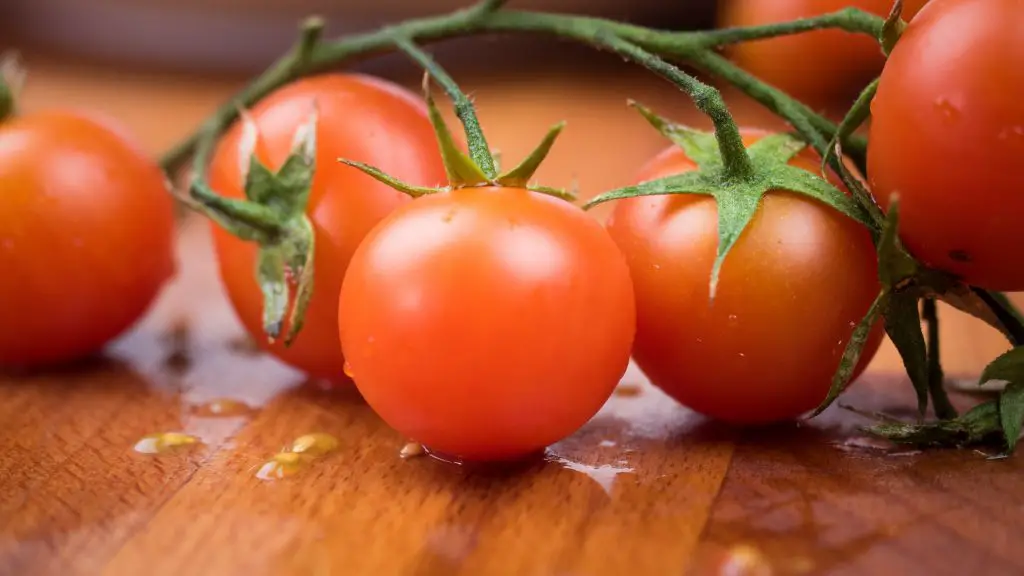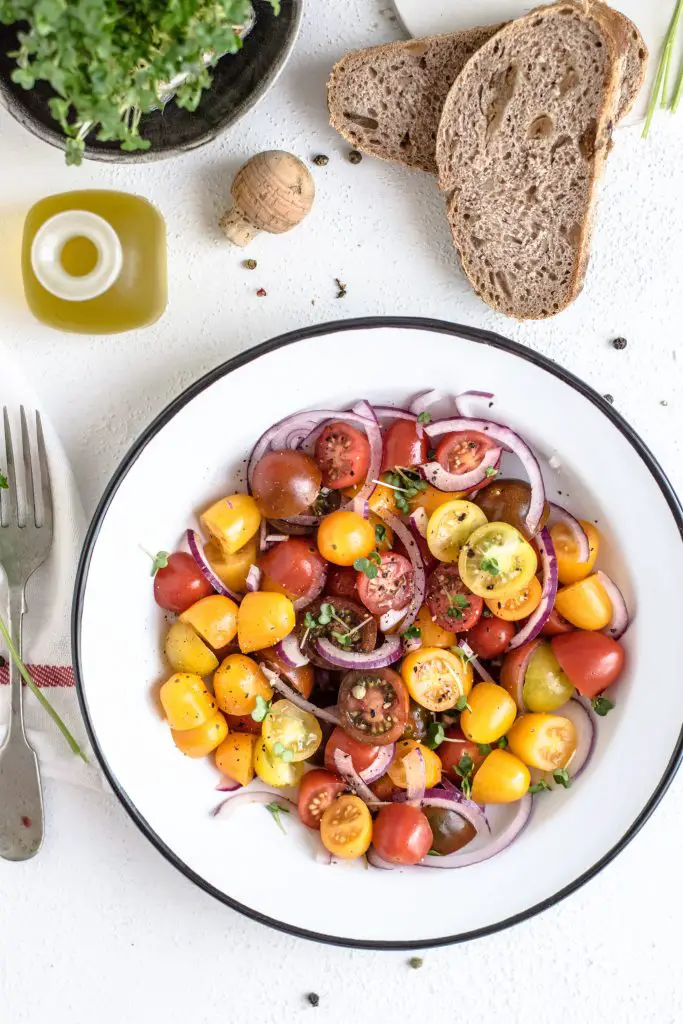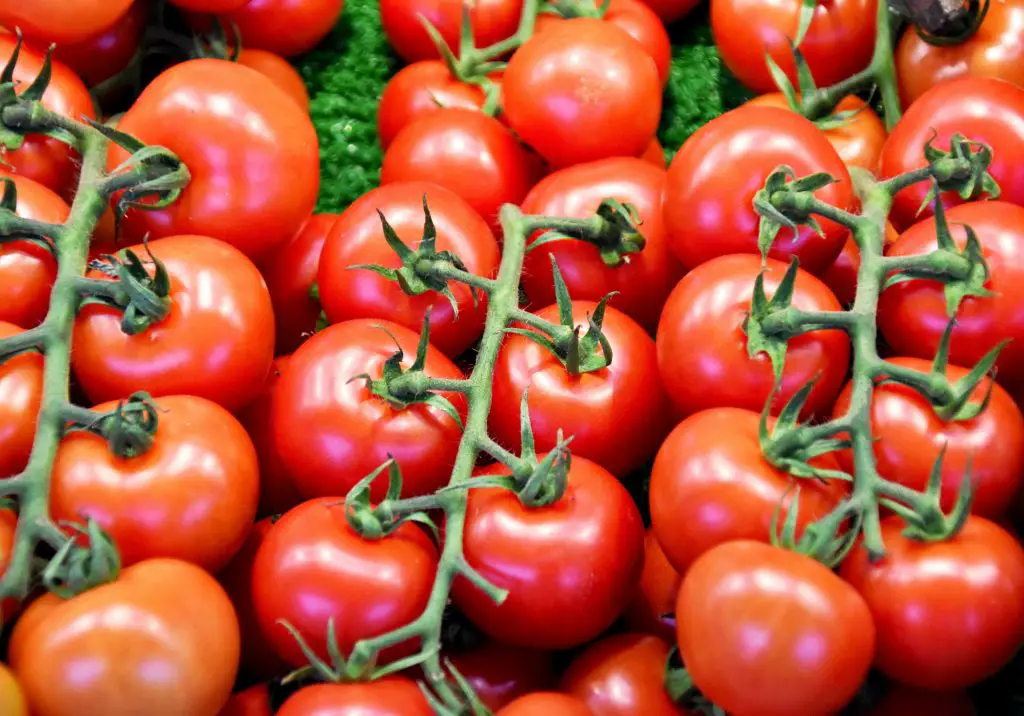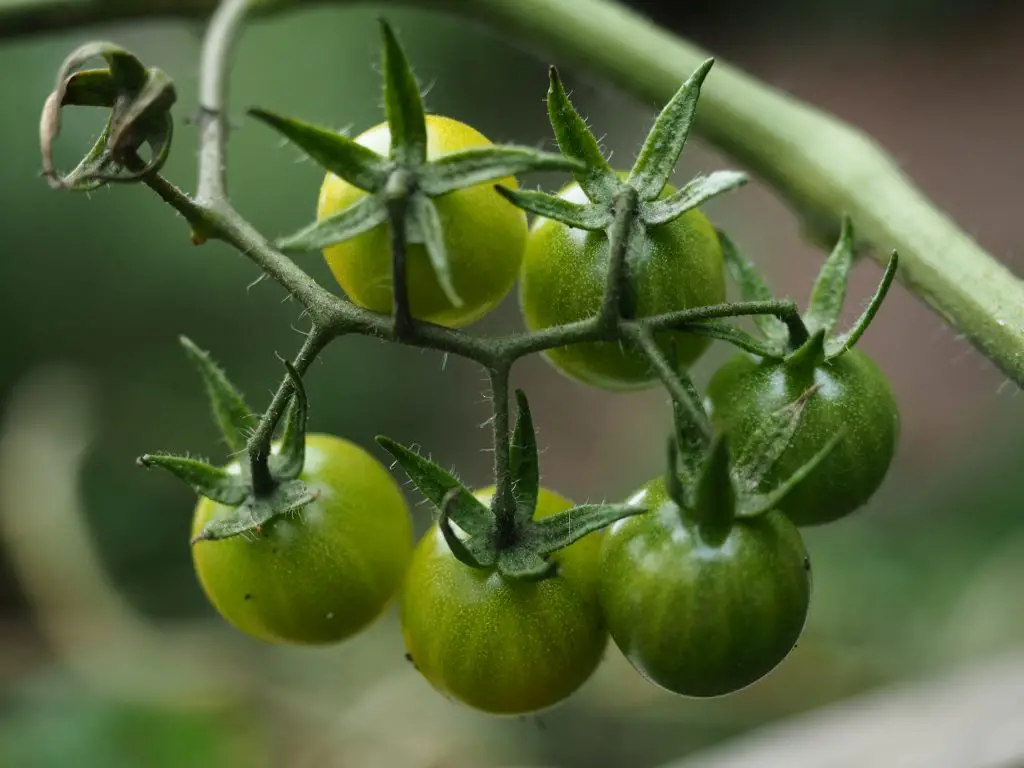Why Do Cherry Tomatoes Taste Better Than Regular Tomatoes? Tomatoes are one of the most popular fruits in the supermarket. However, you may have noticed that there is a very big difference between the taste of the cherry tomatoes and regular slicing ones. This difference is also noticeable in homegrown tomatoes, though to a lesser extent. So what is it that makes cherry tomatoes taste better?
The flavor of cherry tomatoes is preferred by most people over regular slicing tomatoes primarily because the sugar levels in cherry tomatoes are much higher than in slicing tomatoes. The secondary factor is that cherry tomatoes are slightly more acidic than slicing tomatoes which also contributes to the degree of sweetness perceived by the consumer.
According to a spanish academic study published in 2018, which looked 54 different commercial tomato varieties, cherry tomatoes on average had 5.47% sugar vs 3.12% for regular tomatoes. The acid levels were also found to be elevated in cherry tomatoes.
In addition to carrying out chemical analysis on the tomatoes, taste tests were carried out using both trained taste testers and the general public. The perception of the taste testers was also consistent with the chemical analysis carried out. See the table below.
| Sweetness | Acidity | Taste Intensity | |
| Cherry | 6.8 | 6.1 | 5.3 |
| Regular Tomatoes | 4.3 | 5.3 | 4.7 |
It is suspected that the taste intensity recorded by the taste tester is a result of not only the sugar and acid content but also the water content which lower for cherry tomatoes.
Do Home Grown Tomatoes Taste Better Than Store Bought Tomatoes?
For those that do not have their own vegetable garden, you may also be wondering how do store-bought tomatoes compare against the homegrown varieties that many people grow. Anyone that is a vegetable gardener will say without hesitation that homegrown tomatoes are far superior.
My personal experience also supports this opinion, I find of all the different fruit and vegetables I grow tomatoes is the one that shows the biggest difference. Other ones that show massive differences are strawberries and corn.
This is further supported by the 1993 trials conducted at the Diggers Club. The Diggers Club is a seed company that specializes in supplying heirloom seeds. The trial looked initially at 110 varieties of tomatoes, these 110 varieties were narrowed down to 29 varieties that were tested by the public and rated out of 100 flavour (60 points), color (20 points), and texture (20 points).

Included in the 29 varieties was slicing tomatoes purchased from the local supermarket which finished dead last in the trial. The scores of the top 10 varieties and the tomatoes from the supermarket are provided in the table below. Full results of the trials have been published in The Australian Vegetable Garden which is an excellent book for those wanting to learn more about vegetable gardens. It can be purchased on Amazon, click here to see the latest price.
| Rank | Variety | Score |
| 1 | Tommy Toe | 72.81 |
| 2 | Ultra Boy F1 Hybrid | 70.27 |
| 3 | Super Marmande | 69.62 |
| 4 | Broad Ripple Yellow Currant | 69.44 |
| 5 | Stupice Early | 69.28 |
| 6 | Kotlas | 69.19 |
| 7 | Vivian F1 Hybrid | 68.26 |
| 8 | Gardener’s Delight | 67.86 |
| 9 | Cherry Cocktail | 67.00 |
| 10 | Apollo F1 Hybrid | 66.88 |
| 29 | Supermarket Tomato | 44.44 |
Why Is There Such A Difference In Flavour Between Homegrown And Store Brought Tomatoes?
There are two main factors that influence the flavor of store-bought tomatoes, when the tomatoes are picked and the variety itself. Commercially produced tomatoes are picked they are still green and placed in cool storage into they are required to be shipped.
To ripen the tomatoes on command ethylene gas used to initiate the ripening process. And while that does not sound particularly good ethylene gas is naturally produced during the ripening process so it mimicks what would occur anyway. Publication from the University of Florida indicates that there is no appreciable difference in the flavor of tomatoes that are ripened artificially.
The problem with artificial ripen arises if the fruit is picked prior to the breaker stage. The breaker stage the point at which sugar generated from photosynthesis in the leaves is no longer being pushed into the fruit. Picking fruit prior to this point results in the fruit not reaching the maximum sugar levels.
While it is impossible to know how frequently this occurs during commercial production it is likely to be a factor at least some of the time.
The second major factor is the variety that is being sold itself. The mass-produced store-bought tomatoes have been developed since the 1950’s by selecting fruits that are uniform in color and texture primarily because of their consumer appeal. However, this selective breeding has led to unintended consequences according to a 2012 study.
The selection process over time focused on reducing color variations of unripe green tomatoes, leaving them a uniform, pale green color. However, the mutation that has been selected over time has been found to disable other parts of the tomatoes genome. Namely, one of the genes responsible for increasing the degree of photosynthesis that occurs.
The reduced photosynthesis, which is the process is responsible for the production of sugar, has resulted in the production of fruit with very low sugar content.

How To Grow Your Own Homegrown Tomatoes
Growing tomatoes at home is relatively easy but there is some maintenance required throughout the season to optimize the output of the plants.
Tomatoes can be grouped into 2 major types based on their growth habit, determinate and indeterminate varieties. Determinate varieties are also sometimes called bush tomatoes as they are limited in height and will produce fruit all at once.
Whereas indeterminate tomatoes are climbing tomatoes that will continue to increase in height throughout the season. These types produce fruit over a 3 to 4 month period which is advantageous but they require additional support and maintenance as they can get over 6 to 7 feet tall. To read more about the differences click here.
In terms of the volume of fruit you can expect to get per plant it is typically between 20 and 35 lbs (9.1 to 15.8 kg). To read more about the factors that can affect the volume of fruit produced click here.
Sowing Tomato Seeds
To grow tomatoes successfully relatively warm conditions are required as tomatoes are a frost-sensitive plant that does best at temperatures between 68 to 86°F (20 to 30°C). For those living in cooler regions where the growing season is relatively short, it is important to sow the seeds early in the season.
Most gardeners typically start tomato plants off in seed trays rather than plant directly into the garden as it allows the plants to be sown in early spring prior to the last frost.
At this time of year when the nights are still relatively cold, additional heat may be required to ensure the seeds germinate. This may require the tray to be store inside your house however, I have found that heated propagation trays are a better option because the heat applied is consistent and controlled.
This type of equipment is relatively inexpensive and well worth investing in if you wanting to grow tomatoes or other heat-loving vegetables such as Peppers or Eggplants. Click here to check the latest price on Amazon.
When sowing Tomato seeds they should be planted at a depth 0.5 inches (1 cm) in seed raising mix. It is best to plant 2 or 3 seeds per cell to ensure there is at least one plant per cell. If all the seeds germinate the weakest seedlings should be removed.
Once planted seedlings typically take around 6 weeks to reach a sufficiently large size to be planted out into the garden. As the plants are frost-sensitive this should only be done after the risk of frost has passed.
If you need to purchase seeds there are several US-based seed companies that you can visit such as Seeds For Generations or St Clare Seeds. Alternatively, if you live in the UK Thompson and Morgan have an extensive range of seeds available.
Planting Seedlings Into The Garden
When planting seedlings out into the garden they should be spaced 16 to 20 inches (40 to 50 cm). The location should be a warm sunny spot that gets at least 8 hours of direct sunlight a day.
As the tomatoes are relatively hungry plants they should be planted in rich moist soil with plenty of organic matter added.
When planting seedlings it is advisable to install a support structure for the plants. The size of the support structure required is dependent on the type of Tomato you are planting. As discussed earlier Indeterminate, or vine Tomatoes can get up to 6 to 7 ft tall so sturdy, relatively tall structures are best. Things like temporary fencing panels work really well for this purpose as many of the commercially available structures are not tall enough.

Caring For Tomato Plants
Once the tomato plants become established it will necessary to be regularly water and tie the plant to the support structure. Additionally, to stop the plant from getting out of control side shoots need to be regularly removed.
Side shoots are branches that appear between the main stem and existing side branches usually at a 45-degree angle. To read more about how to prune a Tomato plant to maximize yield click here.
Tomatoes will take around 100 days to produce fruit from the date of sowing however, this can vary depending upon the variety and climate from 80 days until around 120 days. If you are purchasing seedlings rather than growing it from seed fruit will be ready in around 60 to 70 days. The harvest period for Tomatoes generally lasts 6 to 8 weeks but can last longer depending upon the climate you live in climate.
How To Ripen Green Tomatoes
As there is often many green tomatoes left on the plant towards the end of the season it is important to try and ripen as many as possible. To encourage the ripening of fruit remove the top of the plant around 4 weeks prior to the first frost which will result in the Tomato putting all its energy into ripening the existing fruit on the plant.
The extent of ripening can be increased by maximizing the time that the Tomatoes spend on the plant. To achieve this the plant should be protected using a frost blanket when the frosts are relatively light.

However, once hard frost begins to arrive and the plants being to freeze there is little benefit in leaving the plants outside. The fruits that are exposed to the hard frosts will still be edible but will not store for after-ripening.
When bringing the Tomatoes inside leave them on the stems as this will aid in the ripening of the fruit. However, only leave Tomatoes of reasonable size on the plant as very small green Tomatoes will not ripen.
To aid the ripening process you can either leave them on a window shelf that gets plenty of light or near other ethylene-producing fruits such as bananas and pears. Though neither one of these measures is essential for ripening they do speed the process up. The other option is to uproot the entire plant and hang it upside down from the rafters of the garage.
When storing Tomatoes during the ripening process it is preferable to avoid having them touching each other. The reason for this is that if one goes bad it will not affect other Tomatoes you are trying to ripen.
Related Articles
Are Grafted Tomatoes Really Worth The Money?
What is the Difference between a Determinate or Indeterminate Tomato?
Do You Need To Prune Indeterminate Tomatoes?
How Many Tomatoes Can You Get From One Plant?
How Can You Tell If A Tomato Flower Is Male Or Female? And How To Hand Pollinate Them.
Is It Too Late To Plant Tomatoes? And How To Make The Most Of Summer
Can You Plant Seeds From A Store Bought Tomato? (Is It Possible?)
